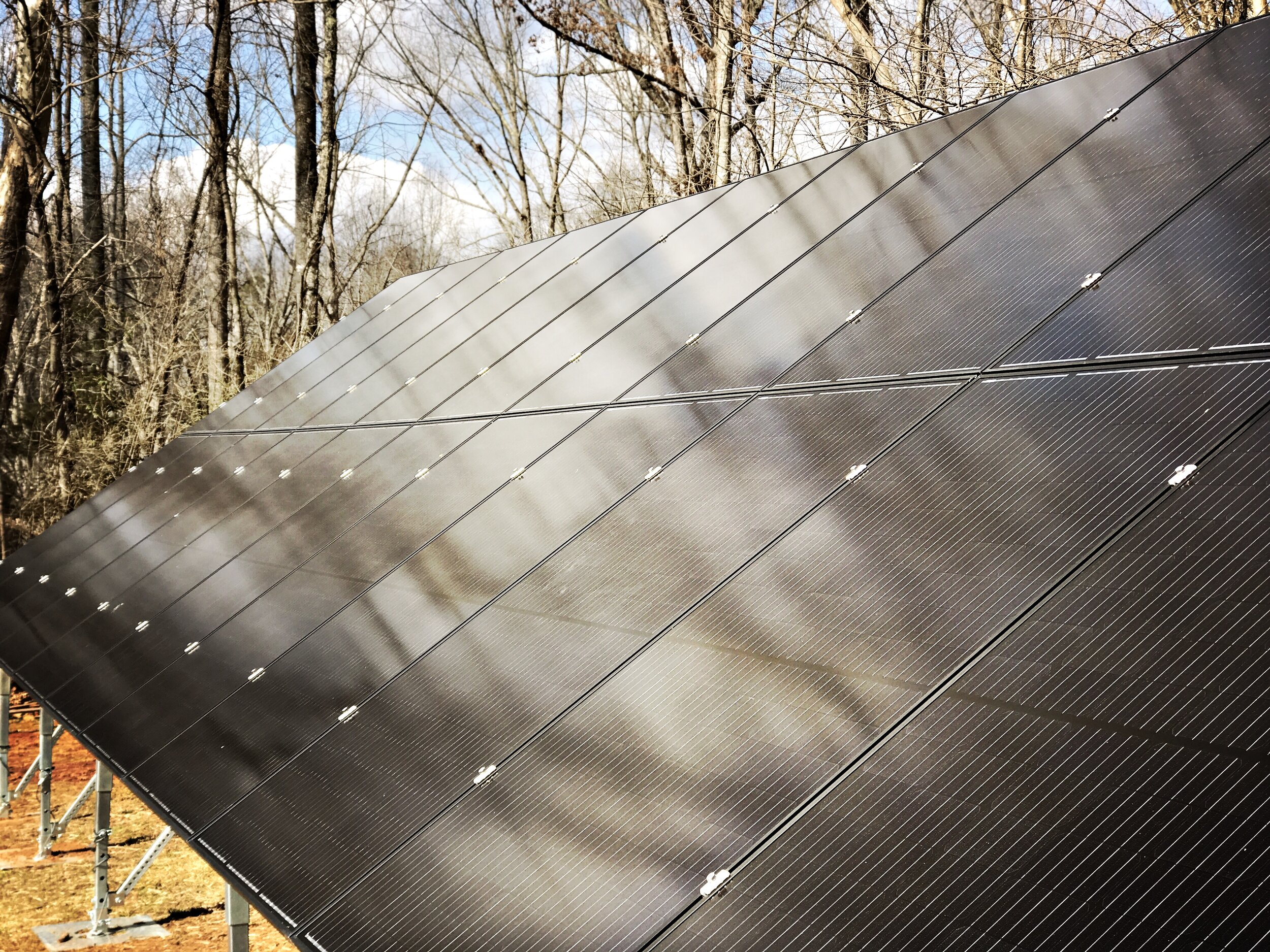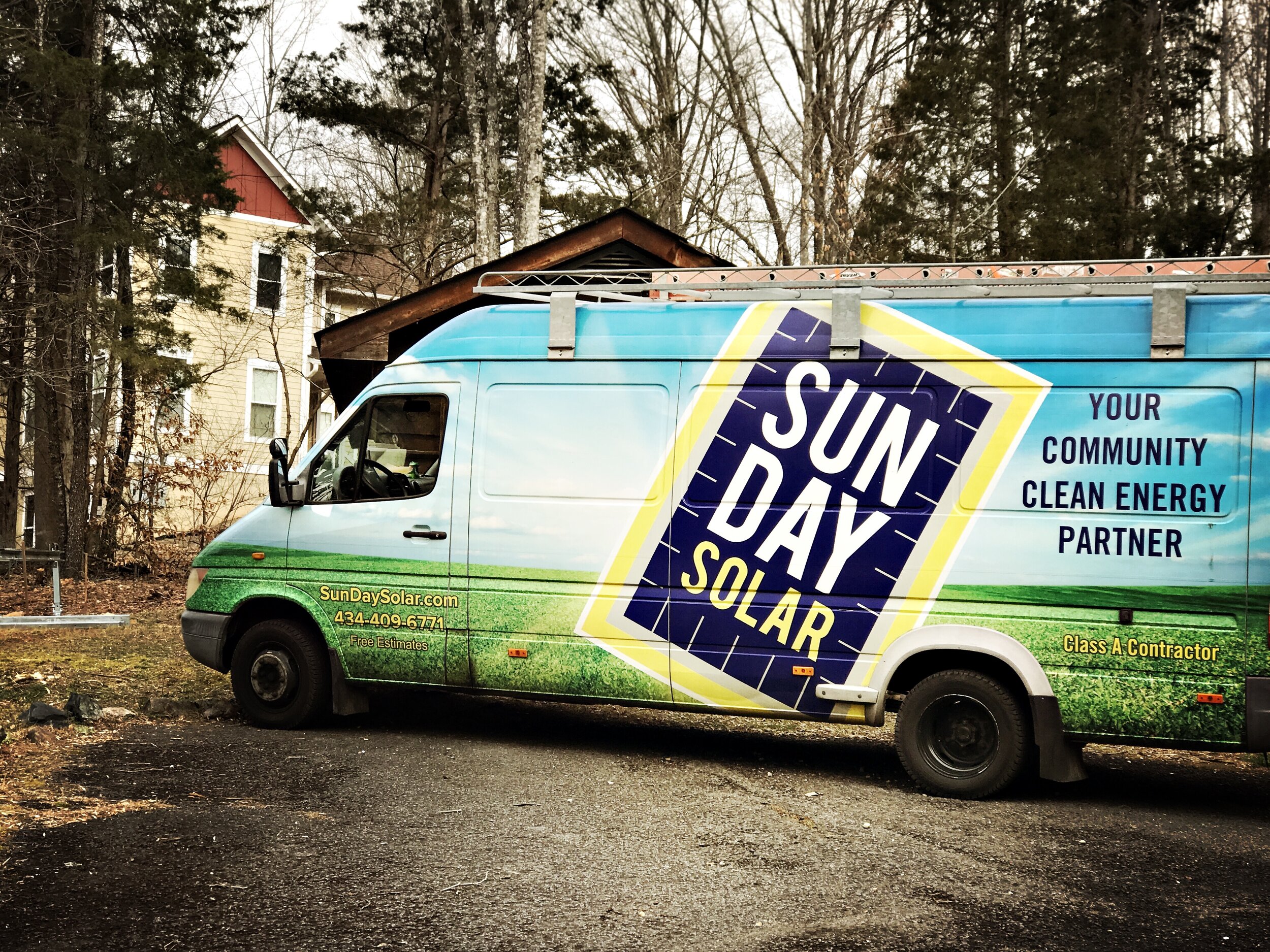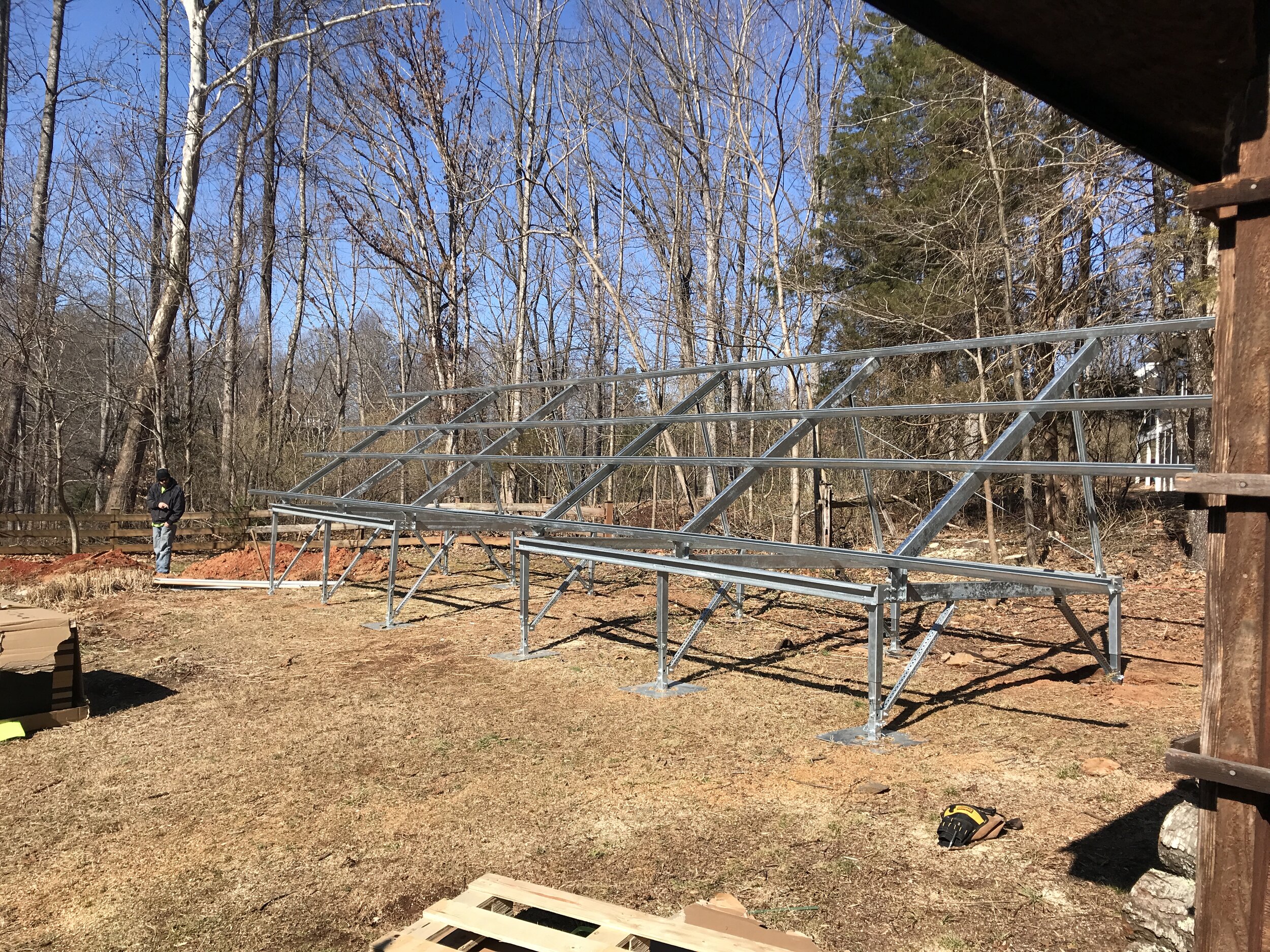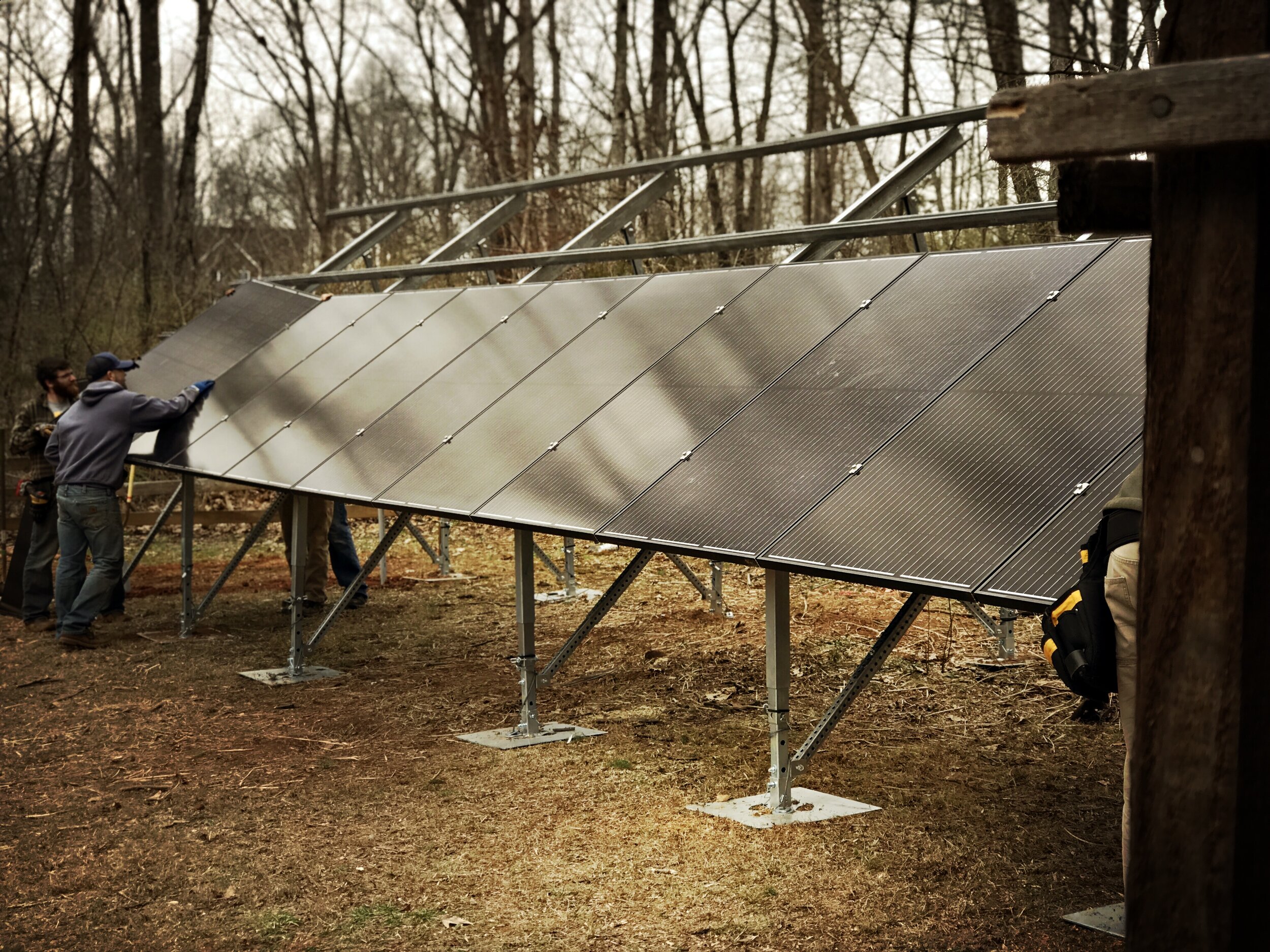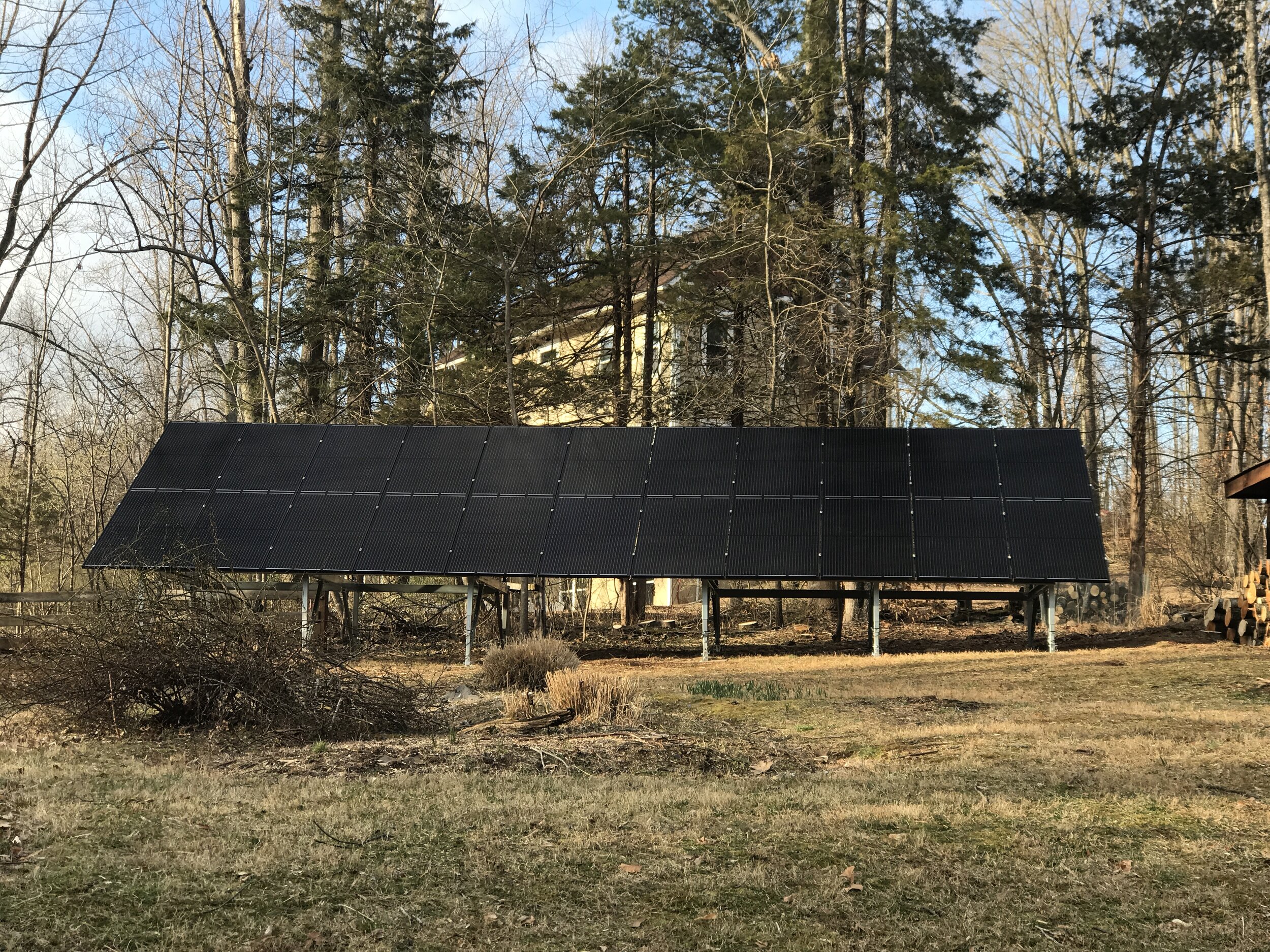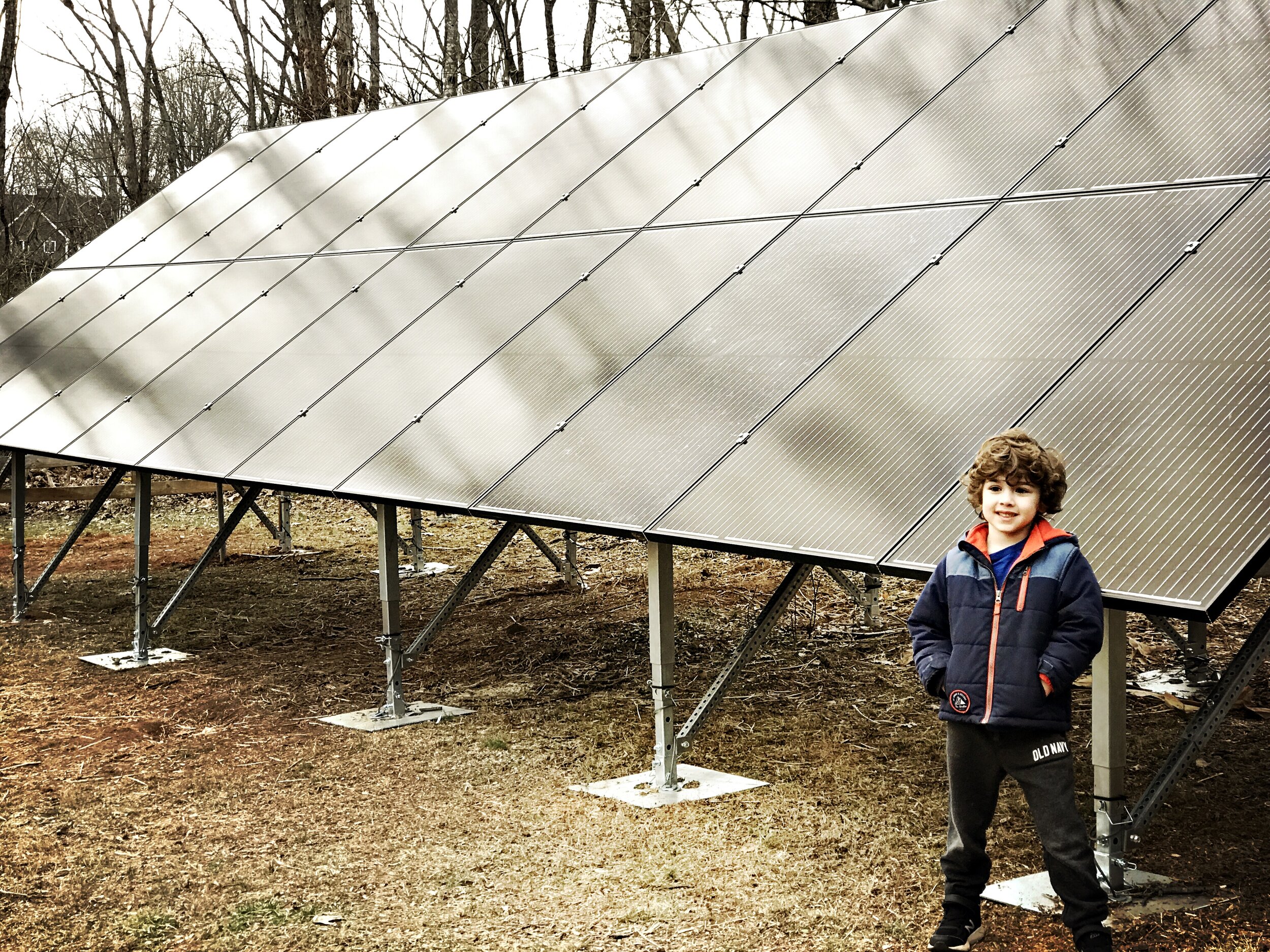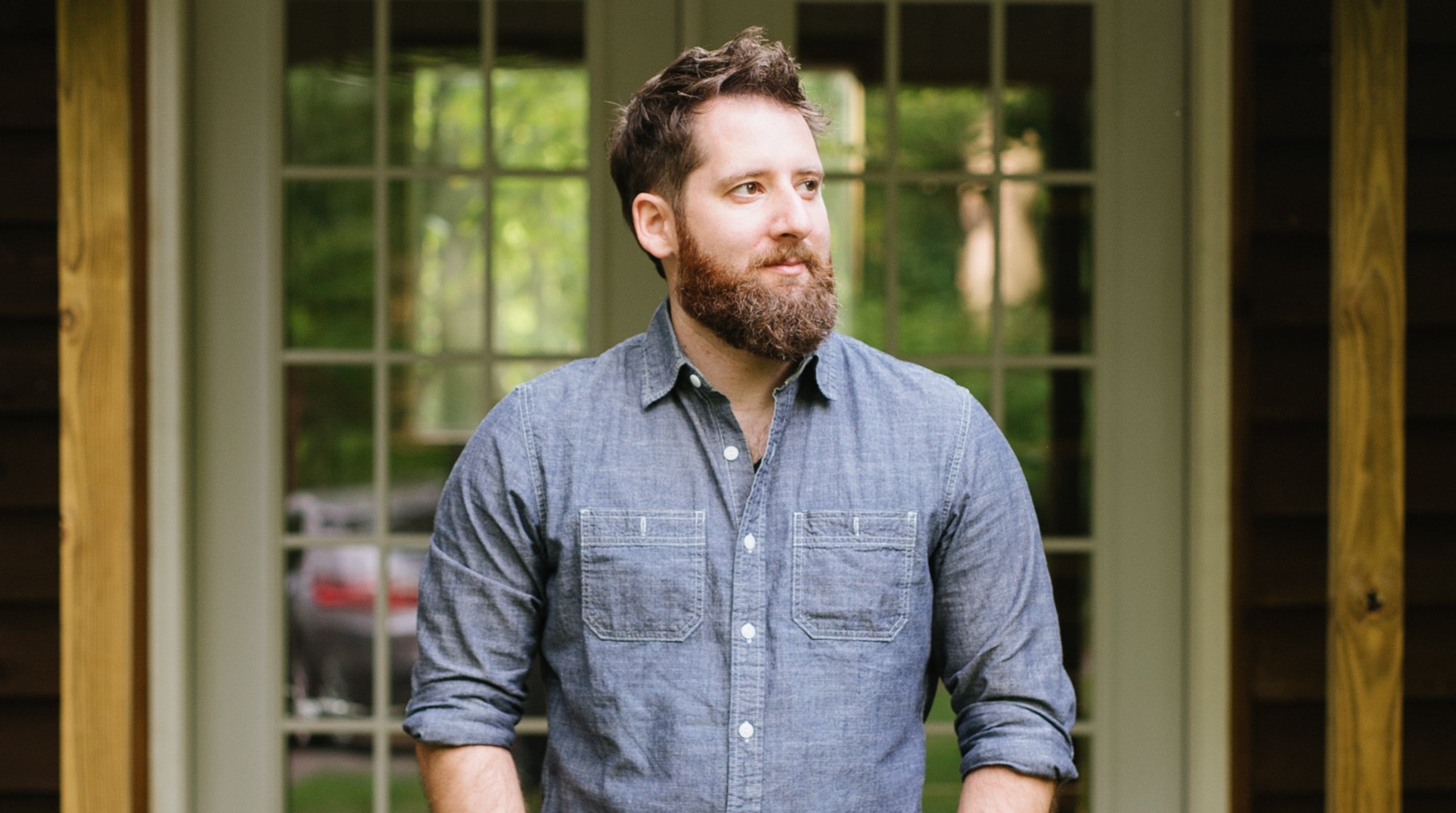Installing a Ground-mounted Residential Solar Array and Inverter
So…we started installing a ground-mounted residential solar array and inverter in late February 2020, which feels like a very long time ago. I've been meaning to write and post the final series in our drawn-out solar saga for a few weeks now, but hey, the world turned upside down in those weeks, and we now find ourselves in a collective moment or maybe a shared worldwide realization that something has changed and is changing, for both the better and worse.
As a civilization, I believe we'll get through this moment—albeit with major bumps and bruises and a shredded economy and a depressing number of avoidable deaths—but at best, I hope this period will help us reprioritize and be a valuable dry run: practice for the more sustained paradigm shift caused by climate change.
Sometimes we have to take something apart in order to do it better.
Basics of Our Ground Mounted Residential Solar Array
Ideas of self-reliance and prepping have now spread from the fringes to the mainstream, so it feels appropriate to close the loop on this solar story in hopes that more people consider making the switch.
Sunday Solar arrived on site for the install on Feb 19 with a small two-man crew: JP and David. They were kind enough to let me work alongside them as much as my work and family schedule allowed, and they educated me as we went.
BUILDING THE RACKING SYSTEM
These ground-mount jobs, they said, were tough because of all the steel involved, but were in some ways easier than doing electrical work atop a three-story house, where your life is held by a 3/4-inch rope nailed to the roof.
The Osprey PowerPlatform racking system we assembled is revolutionary, I learned, because its earth anchors can be installed in a fraction of the time by unskilled labor (like me!) using handheld power tools, compared to previous ground-mount systems that required skilled labor and heavy machinery to pour concrete pads or pile-drive foundations. That was nice to hear, but it still took 2-3 days to get it built (in the timelapse you can see us get it partially finished and then dismantle it when we realized we’d put the wrong crossbeam in place).
Sometimes we have to take something apart in order to do it better.
THE 3 TYPES OF SOLAR ENERGY SYSTEMS EXPLAINED
Since COVID-19 hit, a bunch of people commented that we picked the right time to start "living off the grid." I think it’s important to clarify something I certainly didn’t understand at first…
There are three kinds of solar systems: grid-tied, off-grid, and hybrid.
GRID-TIED SOLAR SYSTEMS
Ours is currently a grid-tied system, which means the electricity we generate supports and is also dependent on the Dominion Energy electrical grid. These are the most common types of systems today, largely due to the cost of battery backups (see below). The solar panels generate DC electricity from the sun, which is then converted to AC electricity for the home using a grid-tie inverter. This inverter communicates with your utility, importing energy from the grid when needed, and also exporting or back-feeding excess energy to the grid when possible. The downside? The system is still very much dependent on the power grid, so when there’s a storm and a blackout, our panels don't function.
2. OFF-GRID SOLAR SYSTEMS
Off-grid systems require more equipment (charge controllers, battery banks, backup gas generators, etc.), because they operate totally independent from the utility company. You are no longer dependent on the utility company, but if it's overcast for a few days and the batteries/ and gas runs out, you have no power.
3. HYBRID SOLAR SYSTEMS
A hybrid system offers the best of both worlds—a grid-tied system plus a hybrid inverter and battery backup (which we’re planning to install) which stores energy for later use. You can add and pull energy from the grid generally, and only pull from the battery at night (typically during peak rate hours when electricity is more expensive), or if there’s a power outage. You need a separate breaker panel to handle your critical loads, and much like a whole-house generator, a power outage will trigger a changeover to this critical loads panel drawing power from your battery backup.
PANELING & WIRING
With the racking system constructed, late February with JP, David and the SunDay crew was about paneling. It went faster, and we had more time to shoot the shit.
JP, the project lead, has been in the solar game for about six years, having made the shift from welding—a profession that nearly wrecked his health. He comes from a military family and operated with that telltale combination of precision and swagger, his expertise lying in electrical work.
David was quieter. He started in solar more recently, and his expertise is landscaping and farming, most recently at the Sevenoaks Spiritual Retreat Center. On the first day, when we dug up some pampas grass to make room for the rack, David pointed out the lemon ants we found in the root system, explaining that they’re a tasty source of protein if you’re really in a bind.
I mentioned I was going to a prepper expo in Kentucky the following weekend, which got us talking about end-of-the-world scenarios. This was Feb 25. COVID-19 wasn't mentioned, not a thing yet. JP started talking about different kinds of preppers…
“If the endtimes come, I don’t think I could be a Farmer,” he said, motioning to David. “I’d have to be a Scavenger. If I have to deal with The Fall, I’m going to try to enjoy it, and go re-exploring. Each person has his own strengths in the aftermath. David would be farming and protecting the old homestead, and I’ll go get the materials he needs to make that happen. It’s knowing your role.”
I found this fascinating—Farmers and Scavengers—that an apocalyptic reset could send us back to that same ancient distinction between hunter-gatherers and agriculturists, the shift to or from civilized society.
"Why scavenge?" I asked. "Why not just rebuild civilization?"
JP admitted a longtime love of zombie apocalypse media, and that some of this is video game mentality—for him, it would simply be more exciting, more fun, to be out there in the new wild, mixing it up.
I initially read into this a predatory or imbalanced relationship—that Scavengers will simply steal the Farmer’s harvest—and real life is not a video game where you can just save and quit. But JP had something different in mind, something more collaborative.
“No, I wouldn’t be able to live if I *only* scavenged,” he said. “I wouldn’t be able to find all the resources I'd need for my family. Farmers and Scavengers have to work together, they need each other.”
I thought back to the different kinds of solar panel setups. The off-grid: rugged individualists, shunning the system.
The grid-tied: feeding into and dependent on the system, maybe too trusting that it will hold.
And the hybrid system, the best of both worlds: symbiotic, collaborative, or at least hedged.
Social isolation days are a great reminder of how much we need each other.
GOING LIVE
Our system went online in early March, and is now backfeeding energy to the grid. One final step before we could fully go live was to pass an inspection and have our regional utility, Dominion Energy, swap our our traditional meter for a new one that allows them to assess the energy being fed into their grid, and also allows them to shut our system down remotely if they need to do work on the utility lines (so they don’t get shocked).
Using our SolarEdge inverter’s realtime monitoring app, I can now see how our system is running and look at daily, weekly, monthly numbers. From mid-March to mid-April, our first full billing cycle with the panels installed, our system produced 657 kWh of energy, and is on track to improve on that in April-May. We’ve seen solid cost savings, but now that we’re home 24/7, our energy consumption has certainly increased from its pre-quarantine levels, so it’s a little tricky to make an apples-to-apples comparison. Once we’ve got another month or two of production under our belts, I’ll do a more comprehensive economic analysis and post it here. The monitoring app also tells me that our panels have saved 1,800 lbs. of CO2 emissions thus far, the equivalent of planting 45 trees. So that’s cool.
I’m pleased that we undertook this installation before COVID hit, because I’m not sure we would’ve had the budget or confidence or time or wherewithal to do something like this in our new reality. That said, it’s a daily reminder of the importance of self-reliance, especially now. With so much uncertainty, we’ll likely upgrade to a battery backup hybrid system sooner rather than later.
Aside from the economic and environmental benefits, I think Kate Lynn and I have fully come around to the aesthetic impact of the panels on our property. They may not be “pretty” by traditional standards, but there’s something thrilling about walking out of the garage and seeing our array up on the hill of the North Field, collecting sun. It feels like Thunderbird Disco’s stake in the ground, a visual nod to the kind of changes and commitment we hope to make. It’s a fitting backdrop to the next set of DIY homesteading projects we plan to undertake.
If we were fine art collectors, this would be our statement piece.


